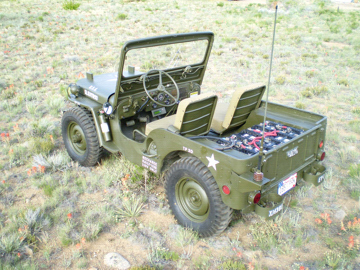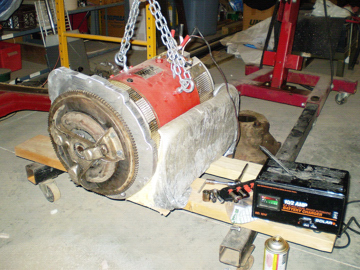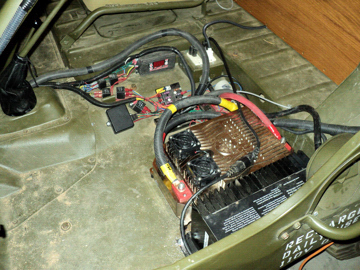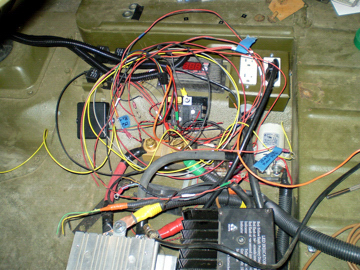
(Photos by Mike and Ellen Picard)
Mike Picard is an avid Jeep enthusiast. He has worked with vintage Jeep iron for 35 years. Interested in building an electric vehicle, Mike found a classic 1952 M38 Willys military model in rough condition. He set out to transform that Jeep into a “green”, electrified Willys!
The story began in 2008, when fuel prices went through the roof…In Mike’s words, “In the summer of 2008, when diesel fuel prices hit $5 a gallon, I decided it was time to make myself an electric commuter car. Rebuilding old Willys Jeep 4x4s as a hobby influenced my vehicle choice. Everybody else on the internet is converting Volkswagens, mini-pickups and Porsches, and I decided to do something very different…The Willys Jeep is a very good candidate for an electric conversion with one exception: While these are beautiful machines, they have the aerodynamics of a brick! Approaching highway speeds, this has a big influence on the size of the battery pack and the size of the motor needed for a Willys electric conversion.”

The prototype for Mike’s conversion is a 1952 Willys M38 military Jeep. This 1/4-ton rated truck came with all the markings of a well-worn Colorado 4×4. Mike had his work cut out!


The WarP 11 DC motor puts out enough torque to power the vehicle through an original Willys transmission and transfer case. Torque output of the motor is less than the L134 four-cylinder gas engine but still adequate for moving and operating the Jeep through its original geartrain. The charge range and the size of the battery packs correlate.
For those unfamiliar with electric vehicle motor dynamics, the WarP 11 is a popular conversion choice. Mike tried a smaller motor but realized that the combined weight of the Jeep and the weighty battery packs demanded more torque.

Here, the WarP 11 motor and a custom adapter plate mate with the stock Jeep flywheel and familiar vintage clutch assembly. The system drives through the clutch in normal fashion.

Installed and operational, the motor’s accessories include a thermal switch and two fans to keep high-amperage heat in check. Note that the electric motor requires a torque-resisting forward support member, much like an internal combustion engine. The rear of the motor is supported with a stock Jeep bellhousing, transmission and transfer case, just like the original M38 Jeep!

Electrics are busy and involve high amperage circuits. Electricity at this amperage requires careful routing, switching and monitoring. Deep cycle battery packs weigh 1,500 pounds, offset a bit by eliminating the L-head 134 four-cylinder engine.

“Electro-Willys” has attracted considerable attention, including media coverage at Electric Vehicle TV. Mike Picard’s hard work and unique vehicle choice has paid off. This converted M38 Willys is currently one of ten finalists out of 955 contestants in an international EV contest.
The contest winner will upgrade his or her EV to the next level—under full television coverage! Mike has plenty of ideas on taking the Willys to the next level, including LiFePO batteries that will extend the driving range, add noticeable performance and reduce battery weight by 2/3rds!
Mike has chronicled the project at the Electro-Willys website. You can follow project plans, new developments, test results and improvements made along the way. Interested in pursuing an electric vehicle conversion? Mike has done R&D and shares it. Click here to reach the Electro-Willys website!
